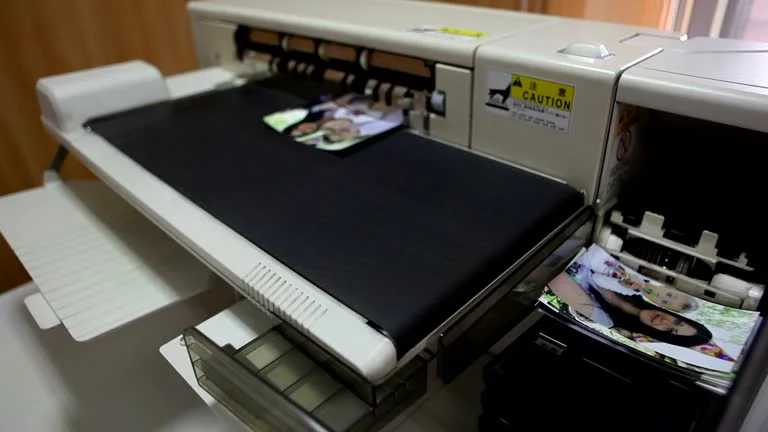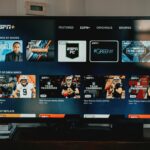Buying a flatbed printer is one of those decisions that can either transform your business or become an expensive paperweight, depending on how well you plan it out. These machines aren’t like buying a regular printer where you can just plug it in and start printing. There’s a whole ecosystem of considerations – from space requirements to material compatibility to ongoing costs that can make or break the investment.
Discover more on this topic in our related post — your next read awaits!
Understanding Your Space and Infrastructure Needs
First things first – these machines are big. Even “compact” flatbed printers usually need at least 8×10 feet of floor space, and that doesn’t include room for material storage and operator access. The larger production models can easily take up 15×20 feet or more.
But it’s not just about floor space. Most flatbed printers need dedicated electrical service – often 220V single-phase or even three-phase power for the larger units. The UV curing systems draw a lot of power, especially during startup. I’ve seen businesses get shocked by electrical upgrade costs that weren’t factored into their initial budget.
Ventilation is another consideration that gets overlooked. UV inks produce ozone during curing, and while modern printers have extraction systems, you still need adequate ventilation in the workspace. Some locations might need additional exhaust fans or air handling equipment to meet safety requirements.
Weight is something else to think about. These machines typically weigh 1,500-5,000 pounds, sometimes more. Most commercial floors can handle this, but if you’re in an older building or upper floor, you might need to verify load capacity.
Print Volume and Application Assessment
Be honest about your actual print volume versus what you think you’ll print. It’s easy to get excited about capabilities and overestimate how much flatbed work you’ll actually do. A machine that sits idle most of the time becomes expensive to maintain because UV inks can clog printheads when not used regularly.
Think about the materials you’ll actually print on, not just what’s possible. If 80% of your work will be on standard substrates like aluminum or acrylic, don’t pay extra for exotic material capabilities you’ll rarely use. Conversely, if you need to print on unusual materials, make sure your chosen printer can actually handle them properly.
Size requirements matter too. Flatbed printers come in standard sizes like 4×8 feet, 5×10 feet, or larger. Bigger beds cost more but give you flexibility for larger pieces or ganging multiple smaller items in one run. However, if most of your work is smaller format, the extra bed size might not justify the additional cost.
Technology Options and Trade-offs
UV-LED versus mercury vapor UV systems is probably the biggest technology decision you’ll face. UV-LED systems cost more upfront but use less power, generate less heat, and have longer lamp life. Mercury vapor systems are cheaper initially but have higher operating costs and require more ventilation.
Printhead technology varies significantly between manufacturers. Some use industrial heads from companies like Ricoh or Epson, while others develop their own. Industrial heads are generally more reliable but cost more to replace. The number of colors affects both print quality and operating costs – more colors give better results but increase ink costs.
White ink capability is worth considering even if you don’t think you need it now. White ink allows you to print on dark or transparent materials, which opens up a lot of application possibilities. However, white ink is notoriously difficult to maintain and can cause reliability issues if not managed properly.
Software and Workflow Integration
The RIP (Raster Image Processing) software that comes with the printer is crucial for operation, but it’s often an afterthought in the buying decision. Some manufacturers include basic RIP software, while others charge extra for advanced features like color management, nesting, or production management tools.
Make sure the RIP software integrates with your existing design workflow. If your staff uses Adobe Creative Suite, look for RIPs that have good integration with those programs. File format support matters too – make sure the system can handle the file types you commonly work with.
Color management capabilities vary significantly between systems. If color accuracy is critical for your applications, you’ll want a system with good ICC profile support and the ability to create custom profiles for different materials.
Ongoing Costs and Maintenance Requirements
Ink costs can be shocking if you’re not prepared for them. UV inks typically cost $200-400 per liter, and a liter might only cover 400-800 square feet depending on coverage levels. Heavy coverage jobs or prints with a lot of white ink can consume ink quickly.
Printhead replacement is probably the biggest maintenance expense. Heads can cost $1,000-3,000 each, and a typical printer has 4-8 heads. Proper maintenance can extend head life significantly, but eventually they all need replacement. Budget at least $5,000-10,000 per year for head replacements on a busy machine.
Other consumables include UV lamps ($500-1,500 each, replaced every 1,000-2,000 hours), cleaning solutions, and various filters and maintenance parts. Annual maintenance costs typically run 8-12% of the machine’s purchase price.
Vendor Support and Training Considerations
Local service support is absolutely critical. These machines are complex and require specialized knowledge to maintain and repair. Make sure your vendor has qualified technicians within reasonable travel distance, or factor in higher service costs for remote support.
Training is more important than most buyers realize. Operating a flatbed printer properly requires understanding of color management, material properties, and print optimization. Plan on at least a week of initial training, and budget for ongoing training as your applications evolve.
Parts availability and supply chain reliability should factor into your vendor selection. Some manufacturers have excellent parts support, while others can leave you waiting weeks for critical components. Ask about typical parts delivery times and whether common maintenance items are stocked locally.
Financial Considerations and ROI Planning
Lease versus purchase decisions depend on your financial situation and growth plans. Leasing typically costs more over the long term but preserves capital and can include maintenance packages. Purchase gives you ownership but ties up capital.
Don’t forget about installation costs, which can add $5,000-15,000 to your total investment depending on site preparation requirements, electrical work, and training needs.
ROI calculations should include not just direct printing revenue but also cost savings from bringing outsourced work in-house and the value of faster turnaround times. Many businesses find that reduced outsourcing costs alone justify a significant portion of the investment.
Check out this featured post—handpicked to offer you top-tier value and info.






